|
|
|
RETURN TO THE TALPA MAPLE FOREST
|
Following CUCBA botanists into
the Talpa Maple Forest, where an Acer is not a computer
By John Pint 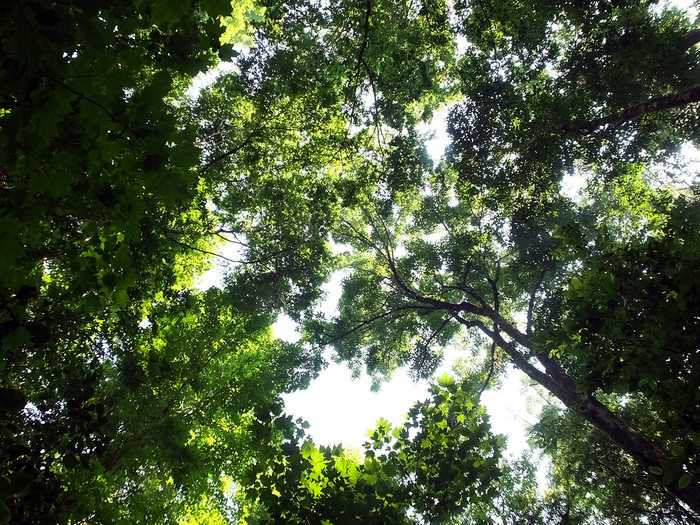 June, 2016. “In May I'm taking a group of botany and biogeography students to El Bosque de Maples,” Professor Miguel Muņiz told me some months ago. “Would you like to come along?” Who could say no to an offer to revisit this ancient cloud forest whose existence only came to light around 16 years ago? It's a rare place where maples (Acer), conifers (Podocarpus) and walnut trees (Juglans)—usually found in cold climates—live in peace and harmony with the world's tallest tree ferns (Cyathea costaricensis) and other plants that love warmer weather. But what is most wonderful about this particular forest is that it has thrived at this spot for millions of years. So I asked Prof. Muņiz to sign me up and one Saturday in May I found myself on a University of Guadalajara bus heading for Talpa, which is located 150 kilometers southwest of the City of Roses and is famed as a mecca for religious pilgrims with strong legs. On the bus were 26 students and another expert botanist, Professor Viacheslav Shalisko, a Russian who has been living in Guadalajara for13 years and author of a beautifully illustrated Manual for Identifying Trees in Greater Guadalajara, which can be downloaded here as a 39-megabyte PDF file. The bus made several stops for plant identification before we arrived at our destination for the day, a place called Paso Hondo, located 2.5 kilometers northwest of the maple forest. The trail to Paso Hondo conveniently starts right from the paved highway leading to the Bosque de Maples. The bus parked on the side of this road and Prof. Muņiz led us along the guardrail to a spot marked only by a little white plastic bottle on a reed. 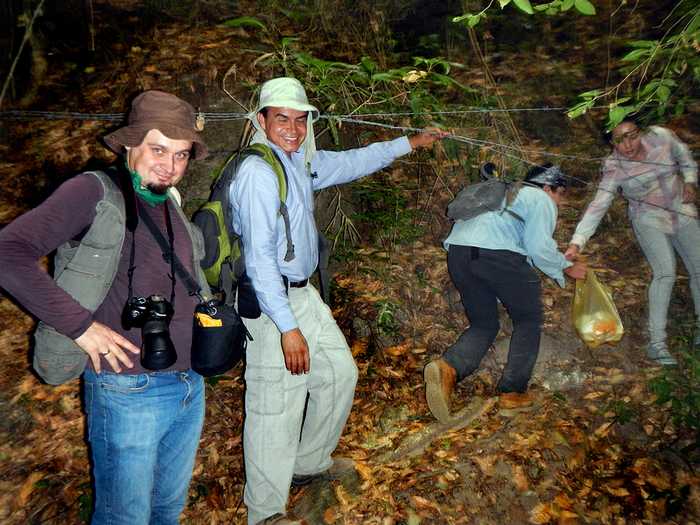 This was the sole indicator that idyllic Paso Hondo was waiting for us only 85 meters below the highway. We took a few steps and came to what I call the typical Mexican trail head: a barbed wire fence which you can climb under, over or through. In a couple of minutes, we arrived at a delightful, well-shaded pool of cool, clean (“drinkable” says Muņiz) water, deep enough for diving, with a waterfall-waterslide thrown in for extra measure. 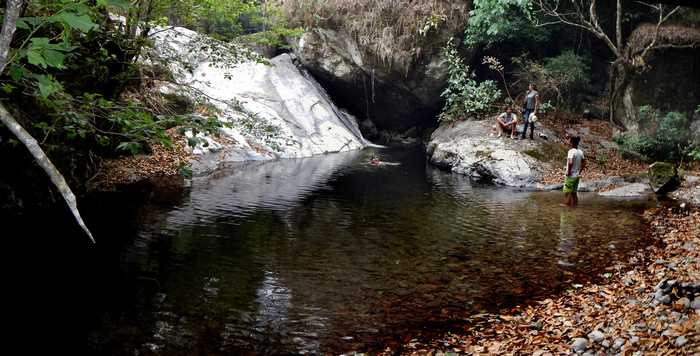 Here we ate our lonches (sandwiches) and then hiked up through the woods to a barely visible trail heading east, where the students took lots of notes on the trees and plants growing just below the altitude of the maple forest. My favorite plant was Smilax aristolochiifolia which turned out to be Mexican Sarsaparilla, once upon a time the chief ingredient of Root Beer. 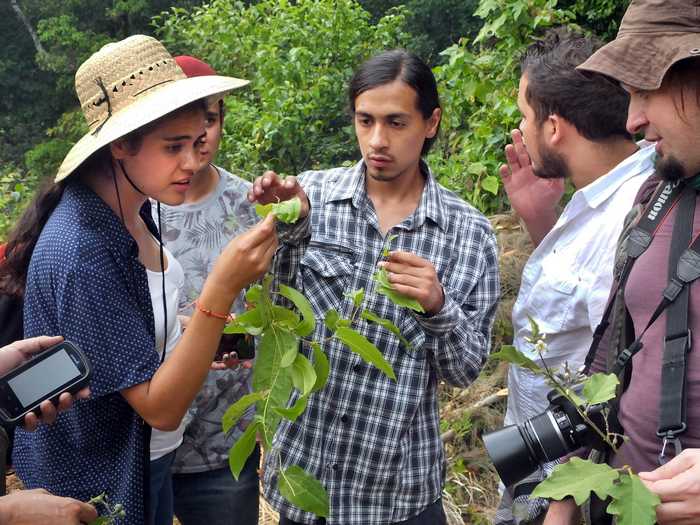 We now proceeded along a just-barely noticeable trail into what Professor Muņiz described as a “huge, singular forest of a tree endemic to MesoAmerica: Matudaea trinervia, a kind of Witch Hazel on the Red List of Threatened Species. After walking 700 meters and discussing all kinds of trees and plants, it was time for us to go back to the bus. “We can follow this same trail back the way we came,” said the Professor, “or … we can go down and walk back through the river...but that's a real killer.” Well, you can imagine which choice appealed most to a bunch of lively young Mexicans: “ĄPor el río, por el río!” they all shouted simultaneously. Once again I found myself engaged in my least favorite outdoor sport: jumping from rock to rock in a river, trying to avoid falling in. “Just in keeping with the spirit of your favorite botanist, Miguel Cházaro,” said Prof. Muņiz with a wink, reminding me of my numerous salidas with Cházaro, every one of which had ended with a by-the-seat-of-your-pants narrow escape. Our return along the Madroņo River was no exception: leaping to and from huge, slippery, moss-covered boulders from which I would surely have fallen into the drink if not for a helping hand stretched out from these bubbly, budding botanists. Somehow I survived, mainly dry. After sleeping like a river rock that night, I was in the bus the next morning at 8 AM, ready to go to the famous Bosque de Maples. However, three Mexican police vehicles, which had been promised to get us from the highway to the forest, had not shown up. Ay, ay, ay! It was, after all, Sunday morning and I'm sure those Talpa policemen must have been exhausted from fighting crime. Ha, ha, it wasn't until 9:45 that they finally appeared and off we went. The bus was too long to negotiate the many curves along the five-kilometer dirt road from the highway to the maple forest, so the students willingly piled into the open beds of the three police pickups, where they surely must have swallowed a kilo of dust each. As I have already described the walk through this enchanting forest in my book, Outdoors in Western Mexico 2, I will just add that on this visit we confirmed the disappearance of two tree ferns along the trail, which, sadly, was discovered recently by John Keeling and other birders from Chapala. The maple forest is found on a site covering only 150 hectares. This land was purchased and declared “protected” by the powers that be, but our observations suggest there is no protection of any sort and trouble-makers can do what they please. From the Maple Forest, we got back in the police trucks and headed uphill 14 kilometers to the settlement of La Cuesta, where a local man, Don Alfonso Mata, led us further upwards to an incredible gorgeous mirador at 2131 meters above sea level. This was one of the most beautiful places you can imagine, with giant boulders covered with pine needles and bright green moss and a view stretching to the Pacific Ocean. 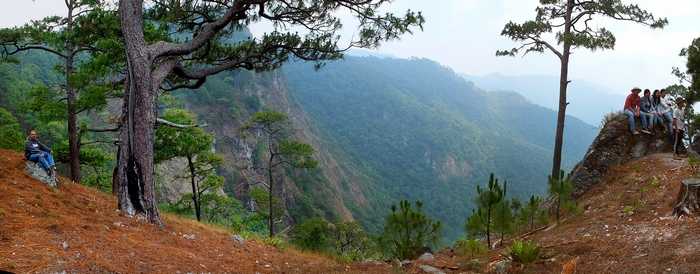 “This is called El Cerro de la Guerra,” said Don Alfonso. “Here 500 government soldiers came after a handful of Cristeros in 1926...and not one of the soldiers survived.” The road to Paso Hondo and the Maple Forest is good all year īround and I suggest you visit the maples in the rainy season, when it is especially luxuriant. As for La Cuesta, go in the dry season when the road is easy to negotiate. All three places are well worth a visit... as long as you don't forget your bug repellent! How to get there The route to the Maple Forest is on Wikiloc.com under Guadhikes – Talpa Maple Forest and the trail is at Guadhikes – Maple Forest Trail. You'll find the Paso Hondo trailhead at N20 13.987 W104 46.471 and the cool pool at N20 13.977 W104 46.423. Cerro de la Guerra's gorgeous lookout is at N20 09.457 W104 42.962. |

